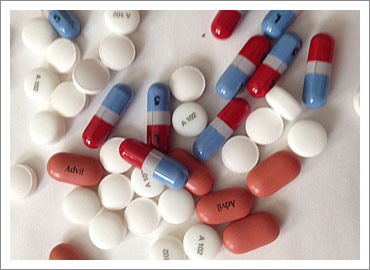- When Code Can Kill or Cure (The Economist) — I’ve linked to the dangers of closed source devices before, but this caught my eye: “In the 1990s we developed an excellent radiation-therapy treatment-planning system and tried to give it away to other clinics,” says Dr Mackie. “But when we were told by the FDA that we should get our software approved, the hospital wasn’t willing to fund it.” He formed a spin-off firm specifically to get FDA approval. It took four years and cost millions of dollars. The software was subsequently sold as a traditional, closed-source product.
- Gut Fungus (Wired) — the microbiome of bacteria in your body is being studied, but now researchers have scoured the poop of different species and found different mycological populations in each, and linked them to diseases.
- Evaluating the Harm from Closed Source (Eric Raymond) — whether or not you argue with his ethics, you will appreciate the clear description of the things you’re trading off when you choose to use closed source software.
- PyBossa — a free, open-source, platform for creating and running crowd-sourcing applications that utilise online assistance in performing tasks that require human cognition, knowledge or intelligence such as image classification, transcription, geocoding and more! (via The Open Knowledge Foundation)
"health" entries

Solving the Wanamaker problem for health care
Data science and technology give us the tools to revolutionize health care. Now we have to put them to use.
By Tim O’Reilly, Julie Steele, Mike Loukides and Colin Hill
“The best minds of my generation are thinking about how to make people click ads.” — Jeff Hammerbacher, early Facebook employee
“Work on stuff that matters.” — Tim O’Reilly

In the early days of the 20th century, department store magnate John Wanamaker famously said, “I know that half of my advertising doesn’t work. The problem is that I don’t know which half.”
The consumer Internet revolution was fueled by a search for the answer to Wanamaker’s question. Google AdWords and the pay-per-click model began the transformation of a business in which advertisers paid for ad impressions into one in which they pay for results. “Cost per thousand impressions” (CPM) was outperformed by “cost per click” (CPC), and a new industry was born. It’s important to understand why CPC outperformed CPM, though. Superficially, it’s because Google was able to track when a user clicked on a link, and was therefore able to bill based on success. But billing based on success doesn’t fundamentally change anything unless you can also change the success rate, and that’s what Google was able to do. By using data to understand each user’s behavior, Google was able to place advertisements that an individual was likely to click. They knew “which half” of their advertising was more likely to be effective, and didn’t bother with the rest.
Since then, data and predictive analytics have driven ever deeper insight into user behavior such that companies like Google, Facebook, Twitter, and LinkedIn are fundamentally data companies. And data isn’t just transforming the consumer Internet. It is transforming finance, design, and manufacturing — and perhaps most importantly, health care.
How is data science transforming health care? There are many ways in which health care is changing, and needs to change. We’re focusing on one particular issue: the problem Wanamaker described when talking about his advertising. How do you make sure you’re spending money effectively? Is it possible to know what will work in advance?

StrataRx: Data science and health(care)
A call for data scientists, technologists, health professionals, and business leaders to convene.
By Mike Loukides and Jim Stogdill
 We are launching a conference at the intersection of health, health care, and data. Why?
We are launching a conference at the intersection of health, health care, and data. Why?
Our health care system is in crisis. We are experiencing epidemic levels of obesity, diabetes, and other preventable conditions while at the same time our health care system costs are spiraling higher. Most of us have experienced increasing health care costs in our businesses or have seen our personal share of insurance premiums rise rapidly. Worse, we may be living with a chronic or life-threatening disease while struggling to obtain effective therapies and interventions — finding ourselves lumped in with “average patients” instead of receiving effective care designed to work for our specific situation.
In short, particularly in the United States, we are paying too much for too much care of the wrong kind and getting poor results. All the while our diet and lifestyle failures are demanding even more from the system. In the past few decades we’ve dropped from the world’s best health care system to the 37th, and we seem likely to drop further if things don’t change.
The very public fight over the Affordable Care Act (ACA) has brought this to the fore of our attention, but this is a situation that has been brewing for a long time. With the ACA’s arrival, increasing costs and poor outcomes, at least in part, are going to be the responsibility of the federal government. The fiscal outlook for that responsibility doesn’t look good and solving this crisis is no longer optional; it’s urgent.
There are many reasons for the crisis, and there’s no silver bullet. Health and health care live at the confluence of diet and exercise norms, destructive business incentives, antiquated care models, and a system that has severe learning disabilities. We aren’t preventing the preventable, and once we’re sick we’re paying for procedures and tests instead of results; and those interventions were designed for some non-existent average patient so much of it is wasted. Later we mostly ignore the data that could help the system learn and adapt.
It’s all too easy to be gloomy about the outlook for health and health care, but this is also a moment of great opportunity. We face this crisis armed with vast new data sources, the emerging tools and techniques to analyze them, an ACA policy framework that emphasizes outcomes over procedures, and a growing recognition that these are problems worth solving.

Why microchips in pills matter
Microchips embedded in pills can ease medicine management and empower patients.
 Earlier this week, Proteus announced that they have been approved by the FDA to market their ingestible microchips for pills.
Earlier this week, Proteus announced that they have been approved by the FDA to market their ingestible microchips for pills.
Generally, the FDA approval process for devices that are totally new like this is a painful one, with much suffering. So it is a big deal for anyone to get approved for anything.
But this is a far more important accomplishment than a mere incremental improvement. It is an entirely new kind of medical device and, most importantly, a whole new potential data stream on one of the most critical issues in the delivery of health care.
Modern drugs work wonders, but it does not help a patient if the patient does not take them. Historically, and I do mean the stone age here, the ability to consistently take pills correctly has been called “compliance.” But please do not call it that. Most participants in the movement for patient rights regard that term as paternalistic.
“Adherence” is a much more respectful term (although I have certainly heard it used in a paternalistic manner). In fact, as we progress, I should define that when I say “adherence,” what I mean is “adherence to a plan that belongs to the patient.” If a pill that I am taking makes me so sick to my stomach that I cannot take it any more, then when I decide to stop taking it, I am not being “non-compliant” or “non-adherent” to a medication plan; I have changed my medication plan, and I have yet to discuss the issue with my doctor.
Still, even for patients who want to consistently take their pills according to a plan, it can be extraordinarily difficult. It is hard to remember when a pill has been taken. It is hard to remember to pick up a new supply or to call for a renewal. It is easy to forget pills on trips and run out unexpectedly far from home. Pills frequently must be taken with food, or without food, or with or without specific foods. They must be taken before bed or before breakfast. Personally, I have trouble remembering to take even a single pill consistently. But many people need to manage a tremendous number of pills, and they frequently go off one set of pills and onto another. In short, pill management is a huge mess, and it is difficult to organize anything.

Health records support genetics research at Children's Hospital of Philadelphia
Michael Italia on making use of data collected in health care settings.
Michael Italia from Children's Hospital of Philadelphia discusses the tools and methods his team uses to manage health care data.

Health records support genetics research at Children’s Hospital of Philadelphia
Michael Italia on making use of data collected in health care settings.
Michael Italia from Children's Hospital of Philadelphia discusses the tools and methods his team uses to manage health care data.


Four short links: 11 June 2012
Open Source Implants, Gut Fungus, Closed Source Damage, and Microtask Framework


Four short links: 1 June 2012
Health App, The Met 3D Scanning, Skinnerian Apps, and Visual Programming
- BeWell App (Google Play) — continuously tracks user behaviors along three key health dimensions without requiring any user input — the user simply downloads the app and uses the phone as usual. Finally, someone tracking my behaviour for my own good.
- Met 3D — the Metropolitan Museum of Art hosts its first 3d printing and scanning hackathon. [O]n June 1 and 2, approximately twenty-five digital artists and programmers will gather at the Met to experiment with the latest 3-D scanning and replicating technologies. Their aim will be to use the Museum’s vast encyclopedic collections as a departure point for the creation of new work. THIS. IS. AWESOME. (via Alison Marigold)
- The Perfected Self (The Atlantic) — everything you knew about B. F. Skinner was wrong, and you should know about him because you’re using his techniques to lose weight, stop smoking, and do your homework. (via Erica Lloyd)
- Google Blockly — (Google Code) A web-based, graphical programming language. Users can drag blocks together to build an application. No typing required. Open sourced.

The rise of programmable self
Quantifying your changes + motivational hacks = programmable self.
Taking a cue from the Quantified Self movement, the programmable self is the combination of a digital motivation hack with a digital system that tracks behavior. Here's a look at companies and projects relevant to the programmable self space.

Visualization of the Week: Running for a year
A visualization shows running data from three major cities.
A year's worth of Nike+ running data from the streets of New York, London and Tokyo was collected and visualized.
